Donuts are a universal dessert and snack that has a history that many people find themselves surprised by. These treats are highly adaptable and fried to perfection, the donut makes a delicious treat. Its status in American culture is undeniable—more than a third of consumers eat donuts at least once a month. With this in mind, what is the earliest history of donuts?
While food resembling doughnuts has been found at many ancient sites, the earliest origins to the modern doughnuts are generally traced back to the olykoek (“oil(y) cake”) Dutch settlers brought with them to early New York (or New Amsterdam).
Are you wondering how it all began with donuts (doughnuts)? In this comprehensive guide, we will explore a history lesson about the beloved donut. We will cover the origins, locations, types, and different processes involved in making this iconic dessert. Read on to find out all there is to know about donuts.
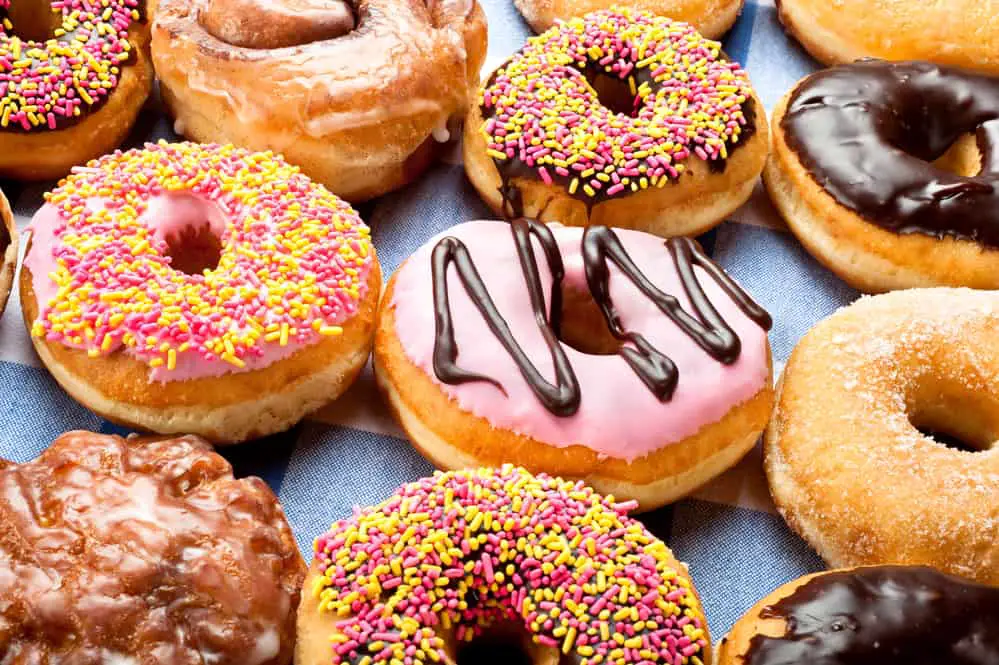
Donuts: A Trip Through Time
Almost every culture has some form of fried dough dish, making it difficult to pinpoint the donut’s origins. In the United States, the donut’s roots date to the 1700s with the Dutch settlers’ olykoek (oil cake), the “grandpa of the donut”. In the early 19th century, donuts were mentioned in American food chapters of English cookbooks.
However, donuts didn’t flourish until World War I, when homesick American servicemen in France were served donuts in trenches by Salvation Army women volunteers—called Donut Lassies—aiming to give them a comforting taste of home. When these men returned home after WWI, they craved more donuts—and the product began to thrive.
The Hole Truth?
The reason why donuts have holes in the middle is debatable. Some say it is to help ease digestion while others say it was to save on ingredients. However, the most popular theory dates to the mid-1800s where a New England ship captain, Hanson Gregory, was unhappy with the doughy consistency in the middle of the donuts served on the ship.
Gregory suggested punching a hole in the middle so the insides of the donuts would cook evenly.
What is certain is that a circle of dough cooks more evenly with a hole in the middle.
Dawn of a New Beginning
In 1920 Century Baking changed its name to Dawn Foods and owners Eugene Worden and Grover Lutz expanded in Jackson, Michigan, to accommodate production of their successful donut mix.
In New York City that same year, the first automatic donut machine was created by Adolph Levitt, who needed the creation at his bakery to keep up with the demand of hungry theatergoers. Customers now could enjoy the show of dough floating down a river of oil during the production process.
In 1934 at the Chicago World’s Fair, the donut was billed as “the food hit of the Century of Progress,” and in 1937 Vernon Rudolph purchased a secret recipe from a French chef in New Orleans for a yeast-raised donut and opened the first Krispy Kreme in North Carolina. The following year, in Chicago, the Salvation Army created National Donut Day to raise funds for the needy and to honor WWI’s Donut Lassies.
During World War II, donuts again made their mark as American Red Cross female volunteers, later referred to as Donut Dollies, distributed donuts (and other sundries) in buses called Clubmobiles. About 100 of these vehicles were at the Invasion of Normandy in 1944.
Six years later, in 1950, Bill Rosenberg opened Dunkin’ Donuts in Quincy, Massachusetts.5 In 1957, Dawn Foods purchased the Perkins Automatic Donut Machine division from Baker Perkins, leading Dawn to produce 2,000 dozen donuts hourly.
Nearly 10 years later, in 1966, Dawn patented a machine that automatically turns donuts over to ice both sides and produces 1,000 dozen iced donuts per hour using the new machine in conjunction with Dawn fryers and conveyor systems.
1972
1972 was a big year for donuts. Dawn developed innovative technology that helped solidify Dawn Raised a donut mix as the industry standard; Entenmann’s launched the rich frosted donut (a chocolate-covered cake like donut that was its bestseller for the next 41 years); and Dunkin’ Donuts rolled out the Munchkin.
Toward the end of the millennium, donuts were on a roll. Krispy Kreme stores, a Southern stronghold, spread north and west—in 1997 its sales climbed 20 percent. Dunkin’ Donuts, meanwhile, maintained stores in twice as many states as Krispy Kreme and in 38 countries. In the last years of the 20th century, 10 billion donuts were made yearly in the United States.
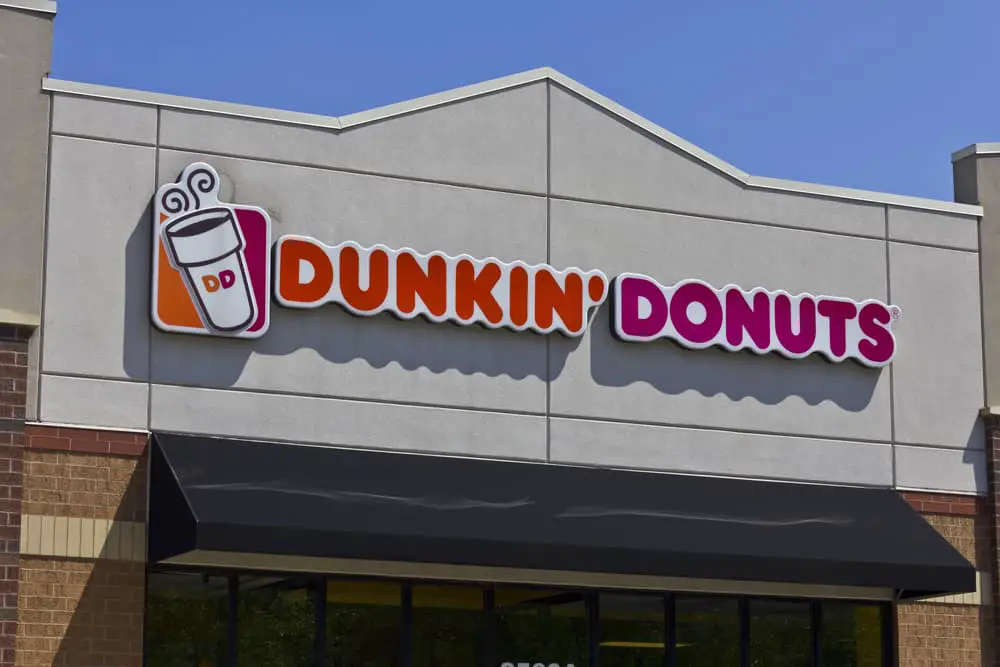
What Is A Donut?
A doughnut, also spelled as donut, is a type of sweet deep fried pastry. Variations on doughnuts are popular all over the world, where they are called by a wide variety of names, although the basic incarnation of fried sweet dough remains the same. The doughnut is often sprinkled with sugar or other toppings, and may be frosted or glazed as well.
Associated in some nations with breakfast, the doughnut is generally agreed to be a sweet and delicious indulgence. Some countries also consume donut holes, a nod to the missing chunk of pastry in a classical doughnut. There are two primary divisions of doughnut: yeast doughnuts and cake doughnuts.
The yeast doughnut hails back to the origins of doughnuts as leftover baking scraps, and tends to be lighter and fluffier with a distinctive yeasty flavor which some consumers find quite appealing. Yeast doughnuts are sometimes baked, as this is perceived to be healthier than deep frying. Cake doughnuts are heavier, with a denser cake-like texture to them. Those known as “old fashioned” doughnuts are usually cake doughnuts.
Fried pastries come in many shapes, but the doughnut is usually only recognized as a circular pastry with a hole in the middle. Doughnuts can be filled or glazed, but the basic shape will remain the same. When cooked properly, the doughnut will retain a round shape and a crisp exterior.
This means that the oil was hot enough to sear the doughnut so oil would not leach inside, making it heavy and oily in flavor. Doughnuts are relatively easy and fun to make at home, and the flavor is well worth the effort.
Who Invented Donuts?
We have talked a bit about the history of donuts in America and briefly about the dessert’s early origins, but while food resembling doughnuts has been found at many ancient sites, the earliest origins to the modern doughnuts are generally traced back to the olykoek (“oil(y) cake”) Dutch settlers brought with them to early New York (or New Amsterdam).
These doughnuts closely resembled later ones but did not yet have their current ring-sized shape. One of the earliest mentions of “doughnut” was in Washington Irving’s 1809 book
A History of New York, from the Beginning of the World to the End of the Dutch Dynasty:
“Sometimes the table was graced with immense apple-pies, or saucers full of preserved peaches and pears; but it was always sure to boast of an enormous dish of balls of sweetened dough, fried in hog’s fat, and called dough-nuts, or olykoeks: a delicious kind of cake, at present scarce known in this city, excepting in genuine Dutch families.”
The name olykoeks was almost certainly related to the oliekoek a Dutch delicacy of “sweetened cake fried in fat.”
According to anthropologist Paul R. Mullins, the first cookbook mentioning doughnuts was an 1803 English volume which included doughnuts in an appendix of American recipes. He also traces its origins to the oliekoek that arrived in America with the Dutch settlers in the early 18th century. By the mid-19th century, the doughnut looked and tasted like today’s doughnut, and was viewed as a thoroughly American food.
Hanson Gregory, an American, claimed to have invented the ring-shaped doughnut in 1847 aboard a lime-trading ship when he was 16 years old. Gregory was dissatisfied with the greasiness of doughnuts twisted into various shapes and with the raw center of regular doughnuts. He claimed to have punched a hole in the center of dough with the ship’s tin pepper box, and to have later taught the technique to his mother.
Smithsonian Magazine states that his mother, Elizabeth Gregory, “made a wicked deep-fried dough that cleverly used her son’s spice cargo of nutmeg and cinnamon, along with lemon rind,” and “put hazelnuts or walnuts in the center, where the dough might not cook through”, and called the food ‘doughnuts’.
Another theory on their origin came to light in 2013, when a recipe for “dow nuts” was found in a book of recipes and domestic tips written in 1800 by the wife of Baron Thomas Dimsdale, the recipe being given to the dowager Baroness by an acquaintance who transcribed for her the cooking instructions of a local delicacy, the “Hertfordshire.”
The first known printed use of donut was in Peck’s Bad Boy and his Pa by George W. Peck, published in 1900, in which a character is quoted as saying, “Pa said he guessed he hadn’t got much appetite, and he would just drink a cup of coffee and eat a donut.”
According to John T. Edge (Donuts, an American passion 2006) the alternative spelling “donut” was invented when the New York–based Display Doughnut Machine Corporation abbreviated the word to make it more pronounceable by the foreigners they hoped would buy their automated doughnut making equipment.
The donut spelling also showed up in a Los Angeles Times article dated August 10, 1929 in which Bailey Millard jokingly complained about the decline of spelling, and that he “can’t swallow the ‘wel-dun donut’ nor the ever so ‘gud bred’.”
The interchangeability of the two spellings can be found in a series of “National Donut Week” articles in The New York Times that covered the 1939 World’s Fair.
In four articles beginning October 9, two mention the donut spelling. Dunkin’ Donuts, which was so-named in 1950, following its 1948 founding under the name Open Kettle (Quincy, Massachusetts), is the oldest surviving company to use the donut variation; other chains, such as the defunct Mayflower Doughnut Corporation (1931), did not use that spelling.
According to the Oxford Dictionary, while “doughnut” is used internationally, the spelling “donut” is American. The spelling “donut” remained rare until the 1950s, and has since grown significantly in popularity; this growth in use has possibly been influenced by the spread of Dunkin’ Donuts.
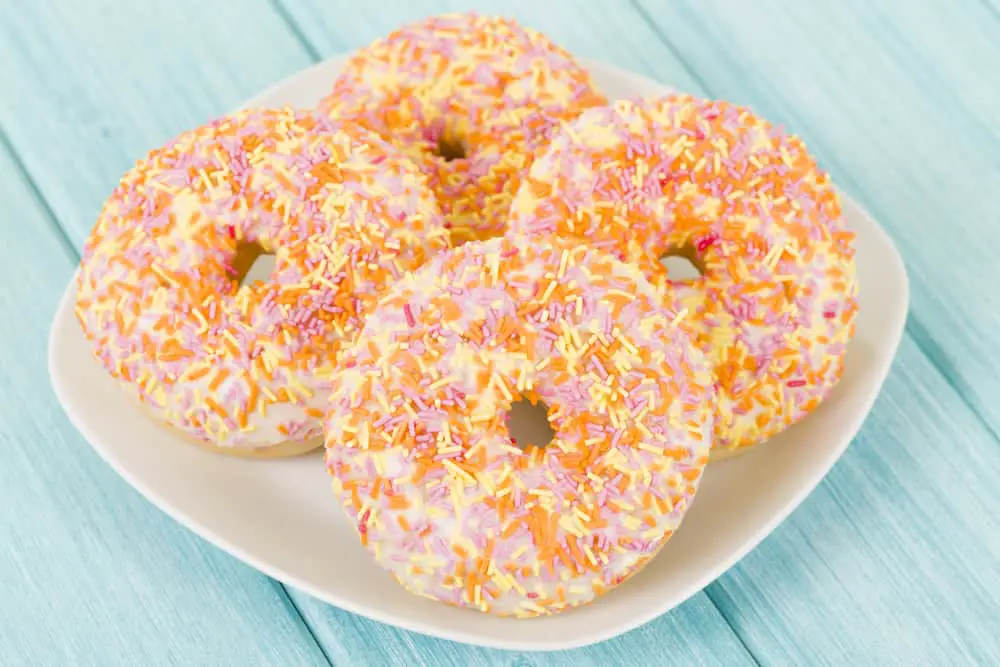
What Is The Most Popular Donut
In a recent poll, Glazed donuts took top honors as America’s most popular donut, with 36 percent of the vote. Second place went to Boston cream, followed by jelly-filled, sprinkles, powdered and twist.
When it comes to favorite donut chains, forty-two percent of the survey participants chose Krispy Kreme. The rest of the top six sweet eateries include Dunkin’, Tim Hortons, Daylight Donuts, Top Pot Doughnuts and Honey Dew Donuts.
Famous Donut Places
Donuts are only as good as the brands who make them. In this section, let’s take a look at an in-depth history of some of the most famous donut manufacturers.
History Of Krispy Kreme Donuts
Well, we all have a man named Vernon Rudolph to thank for the creation of Krispy Kreme doughnuts.
In 1933, Rudolph met a French chef in New Orleans and purchased a “secret yeast-raised doughnut recipe” from the gentleman. At the time, Rudolph was working for his uncle, Ishmael Armstrong, at a general store in Paducah, Kentucky, with doughnuts being only one of the many different goods they sold.
With businesses failing during the Great Depression, Rudolph and his uncle headed south toward Nashville, Tennessee with the hope that their business would prosper in a larger city. This time around, those delicious doughnuts were going to be what the business was based around, and the two opened their doors in 1934.
The undeniable success of this store was enough motivation for Rudolph to open his own store in a town called Winston-Salem, North Carolina. On July 13, 1937, “Krispy Kreme Doughnuts” opened its doors!
Ever the savvy businessman, Rudolph literally cut a hole in the wall of his store and installed a sales window, giving customers immediate access to the legendary doughnuts. As the popularity of the business grew, Rudolph expanded Krispy Kreme, opening new stores across the Carolinas in the 1940s and 1950s.
There was only one problem with this tactic; each store made the doughnuts in house, which inevitably led to minor (or major) differences in the taste and texture of the doughnuts from store to store.
Once again, Rudolph had a solution to this problem: build Krispy Kreme its very own mix plant and doughnut making equipment! Starting in the 1950s on, the stores began to show more consistency with their doughnuts.
Today, Krispy Kreme is an international doughnut chain, still drawing people to their doors when the “Hot” sign is on.
History Of Dunkin Donuts
The story of Dunkin’ Donuts began in 1948 with a donut and coffee restaurant in Quincy, Massachusetts called “Open Kettle.” Founder William Rosenberg served donuts for five cents and premium cups of coffee for ten cents.
After a brainstorming session with his executives, Rosenberg renamed his restaurant “Dunkin’ Donuts” in 1950. His goal was to, “make and serve the freshest, most delicious coffee and donuts quickly and courteously in modern, well merchandised stores,” a philosophy which still holds true today. In 1955, the first Dunkin’ Donuts franchise opened, and in just 10 years, the number of restaurants had grown to over 100 shops.
It was after reaching this milestone that, in 1972, Dunkin’ Donuts introduced its iconic Munchkins donut hole treats. In the years since, Dunkin’ Donuts has expanded its menu to include a wide variety of food and beverage options to keep guests running all day. Dunkin’ Donuts coffee is available in a variety of delicious flavors, including classics like Hazelnut and French Vanilla, as well as seasonal flavors including the ever-popular Pumpkin.
Dunkin’ Donuts has maintained the #1 spot in customer loyalty in the coffee for 10 years running. In addition to coffee and espresso, Dunkin’ serves a host of other beverages such as hot chocolate, iced tea, Coolatta frozen drinks and smoothies. The all-day food options feature innovative menu items like the Big N’ Toasted, alongside a number of other breakfast sandwiches and bakery products.
More recent additions to the menu include Rainforest Alliance Certified Dark Roast coffee, Cold Brew and the Macchiato, as well as the Croissant Donut platform. Dunkin’ Donuts has also become a leader in digital innovation.
The Dunkin’ Mobile App allows guests to pay right from the app with their virtual Dunkin’ Donuts Card. The App also lets guests browse the menu, locate the nearest Dunkin’ Donuts restaurant, access their DD Perks account to find mobile coupons and offers, and more. In 2016, Dunkin’ introduced On-the-Go Ordering, which allows DD Perks members place a mobile order up to 24 hours in advance, select their desired location, and then pick up their order inside a Dunkin’ Donuts restaurant, or at the drive-thru.
Since 1950, the number of Dunkin’ Donuts restaurants has increased to more than 12,000 worldwide, with locations in 45 countries. The company serves approximately 1.9 billion cups of hot and iced coffee every year, with standards for coffee excellence that are among the best in the industry. Over the long-term, the company plans to more than double its U.S. presence, which will put the total number of restaurants above 17,000.
Voodoo Donuts

Voodoo Doughnut is an independently owned business in Portland and Eugene known for its off-kilter concoctions and unusual business philosophies.
Owners Kenneth “Cat Daddy” Pogson and Tres Shannon opened the flagship store in 2003 on Southwest Third Avenue in Old Town Portland. A second store, Voodoo Doughnut Too, is located on Northeast Davis Street (opened in June 2008), and Voodoo Doughnut Tres opened in Eugene on East Broadway in June 2010.
A fourth store opened in Denver, Colorado, in 2013.
Friends Pogson and Shannon were well-known personalities in the downtown Portland music and bar scene during the 1990s. Until 1994, Shannon owned the X-Ray Cafe, an all-ages music venue on West Burnside that promoted the counterculture movement.
Although Voodoo Doughnut has since become part of the popular culture in Oregon, Shannon and Pogson opened the shop as an alternative to standard doughnut fare, bringing to the business the same countercultural spirit that made the X-Ray iconic.
The original store is located in Portland’s old Skid Row near West Burnside, flanked by homeless shelters, late-night live-music venues, and an adult movie theater.
From the start, the shop was open all night, attracting bar-goers after last call who lined up on Third Street to buy doughnuts with names like the Voodoo Doll, the Dirt Doughnut, and the Old Dirty Bastard. Pogson and Shannon, having taken a crash-course in doughnut-making in southern California, experimented with ingredients such as breakfast cereal, Tang, bacon, peanut butter, and crushed Tums.
The city health inspectors stopped the sale of Voodoo products containing over-the-counter medications.
Voodoo’s unusual fare has caught the attention of national media, including the Travel Channel, Top Chef, Rachael Ray, Good Morning America, the Today Show, ESPN, and the reality show The Amazing Race. Notably, Voodoo earned press when it constructed a huge pink box filled with 3,880 doughnuts weighing 666 pounds for the Portland Bridge Festival in August 2011. Then-mayor Sam Adams proclaimed it the “world’s biggest box of doughnuts”—later confirmed by the Guinness Book of World Records.
That same year, Voodoo partnered with Rogue Ales to turn its most popular doughnuts into bottled beer; Bacon Maple Ale and Chocolate, Peanut Butter, & Banana Ale (from the Voodoo’s Memphis Mafia doughnut, a tribute to Elvis) are for sale at pubs throughout Oregon.
The company’s slogan is “The Magic is in the Hole,” and its logo features a version of Baron Samedi, Voodoo Loa of the dead. The cooking oil the shop uses is referred to by Shannon and Pogson as “Voodoo oil.” In order to ritualize the spirit behind the name “Voodoo,” Pogson and Shannon became ordained ministers in the Universal Life Church and perform weddings, both “real” and “fake,” in their stores.
In 2008, Mayor Tom Potter pronounced the Voodoo Portland Cream doughnut Portland’s “Official City Doughnut.”
Duck Donuts
It all started in the Outer Banks of North Carolina.
The idea and name for Duck Donuts originated in Duck, North Carolina in what started as a whim developed into fun recipe sessions, many months of research and collaboration, and eventually led to the first Duck Donuts opening in the town of Duck, NC, in 2007.
The owners soon found that their warm, delicious, and made-to-order donuts paired with a great selection of coffees were a recipe for success. The company expanded to other locations and states and added many franchise owners to the Duck Donuts family.
Along the way, they have kept their focus on delighting their guests by offering a welcoming, family-friendly, and delicious experience to everyone that visits one of the company’s many shops.
Bosa Donuts
The apple fritter will change your life. The classic glazed is as good as they come. The eclair is worth every wonderful calorie. We’re talking, of course, about a little donut shop that’s taken the West by storm and now operates over 20 locations and is growing.
Bosa Donuts is everything you want in a classic donut shop – affordable, fluffy donuts served in a no-frills atmosphere by friendly staff. There’s also coffee drinks, breakfast and lunch sandwiches, fruit smoothies, and hot cocoa for the kids on the menu.
Although all of those items are worth trying, it’s Bosa’s unfettered take on donuts that has won them love from residents. Bosa doesn’t try to reinvent donut recipes or show off donut bravado with culinary skills, they just simply make the perfect donut. Period.
Whether you’re in Chandler, Gilbert, Mesa, Tempe, Casa Grande, Phoenix, or Scottsdale, you’ve got access to Bosa 24/7. (Seriously, they’re open 24 hours a day, seven days per week.) Bosa is opening soon at 32nd Street and Shea, as well as University Drive and Greenfield. Some locations even feature a drive-thru. which is perfect for early morning commuters or late night snackers.
Daylight Donuts
The Daylight Donut Flour Company, LLC, is a privately held enterprise with nearly a thousand retail outlets in 28 states and close to a dozen international markets.
From its founding in 1954, the Daylight Donut Flour Company has embraced an entrepreneurial culture, with all stores independently owned and operated by business people who are free to keep all the profits they earn from their stores.
In 1954, Tommy and Lucille Day set out to create a new kind of donut mix — one with a distinctively light texture and flavor. The Day’s light donut recipe became Daylight Donuts. And over the years, their Tulsa-based enterprise grew into a worldwide network of independently owned retail outlets numbering nearly 1000 and growing.
Shipley Donuts
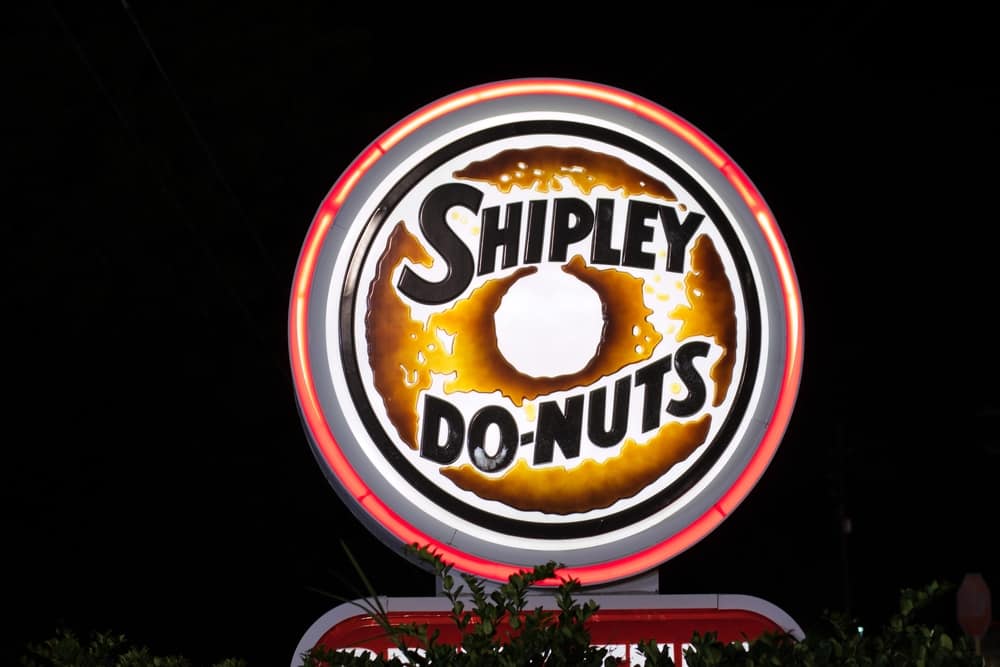
It was 1936, the end of the Great Depression, when Lawrence Shipley, Sr. created a gourmet recipe for Do-Nuts. So delicious were the Donuts (Do-Nuts to Shipley) that they have withstood the test of time. Cut by hand and served hot throughout the day, the Do-Nuts were 5 cents a dozen and were only sold wholesale.
The product was so successful that it started to sell on the retail market in the mid 1940s. With Lawrence Sr. away on donut routes, his wife Lillie would stay behind and make the culinary delights with Lawrence Jr. at her knee.
People would come from miles around to sample the nectar of the sumptuous hot glazed Do-Nuts. Serving them hot was a goal of the elder Shipley. Lawrence Shipley, Sr. once said, “When they bite into that hot donut, it will bring them back every time.”
It is that very concept that continues to bring generations of donut lovers back to Shipley’s as loyal customers.
Yum Yum Donuts
In 1971, Philip C. Holland started Yum Yum Donut Shops, Inc. The first shop was a former Orange Julius in Highland Park, California. This shop is still in operation and is one of the highest volume shops in the chain.
Phil had become familiar with the donut business through a friend who owned a shop. He had also spent time in North Carolina working with Vernon Rudolph, the founder of Krispy Kreme Donuts.
By 1973, Phil had three Yum Yum donut shops and was anxious to expand. Frank Watase joined as an equal partner.
Since donut shops are open 7 days a week, Phil and Frank put in endless amounts of time and effort to operate the shops and develop new locations. Because of their experiences building the business through hard work and dedication, Yum Yum has a very strong work ethic throughout the organization to this day.
Blue Star Donuts
In 2012, Blue Star Donuts began its mission to create gourmet donuts with fresh herbs, spices, fruits, and liquors in unique combinations, unlike anything a donut had ever experienced.
The company’s Executive Pastry Chef, Stephanie Thornton, invents each flavor with an adventurous spirit and quality collaborations that celebrate the creativity and diversity in the shop’s local communities. Blue Star Donuts strives to create delicious and unforgettable donut moments – for grownups and not-so-grownups alike.
Round Rock Donuts
In 1926, Reinhold R. Moehring opened the Lone Star Bakery on Round Rock’s main street. The bakery had few visitors and business was shaky so in the 1930s Moehring started experimenting with new recipes.
In the early 1940’s, Moehring completed a popular recipe for his Round Rock doughnuts and he worked with Mrs. Louise Johnson to create the famous Swedish Rye Bread. In 1943, Selma Erlanson bought the bakery. Three years later, Moehring bought it back and moved to a new location. Louise Johnson purchased the company in 1960 and then sold it to Charlie Baird in 1965.
Later, the bakery was recognized in Texas Monthly for having the best doughnuts in the state.
We have to give credit to Moehring for making the recipe and the people who took ownership of the bakery for continuing the traditional recipe.
Especially the baking staff who made the doughnuts. Even my mom can’t make doughnuts as good as Round Rock Donuts can.
Round Rock Donuts really does have the best doughnuts in Texas! I think the reason for this is the pure genius of Reinhold R. Moehring. His recipe was and still is the foundation of this splendid bakery.
If not for that recipe, this legend would never have been born and these doughnuts would never have entered my mouth. His expert baking skills are the reason the doughnuts are so good. It takes a baking legend to make a doughnut recipe that becomes famous at a state level!
History of National Donut Day
National Doughnut Day, also known as National Donut Day, celebrated in the United States of America, is on the first Friday of June each year, succeeding the Doughnut Day event created by The Salvation Army in 1938 to honor those of their members who served doughnuts to soldiers during World War I.
About 250 Salvation Army volunteers went to France. Because of the difficulties of providing freshly baked goods from huts established in abandoned buildings near the front lines, the two Salvation Army volunteers (Ensign Margaret Sheldon and Adjutant Helen Purviance) came up with the idea of providing doughnuts.
Types Of Donuts
No guide on donut history is complete without an overview of some of the most popular varieties of donuts. Let’s take a look at some unforgettable donut types.
Cronuts
There are two types of people in this world. You have hoity-toity croissant eaters who believe that they are better than the common man and woman. On the other end of the spectrum, you have benevolent donut eaters who will never say no to a scrumptious snack.
All the way back in 2013, these two worlds collided with the invention of the cronut. This half croissant, half donut came to life in New York City and soon it took the planet by storm.
At one point in time, even Dunkin’ Donuts was selling their version of a cronut. Sadly, this marriage was just not built to last. The croissant and the donut are meant for two completely different types of individuals. It’s not a surprise that Dunkin’ Donuts ended up discontinuing their Croissant Donut.
Truth be told, you can go ahead and eat a cronut once to see what it tastes like, but after that, it’s best to pick a side. Either you’re a croissant eater or a donut eater. Trying to be both just doesn’t work.
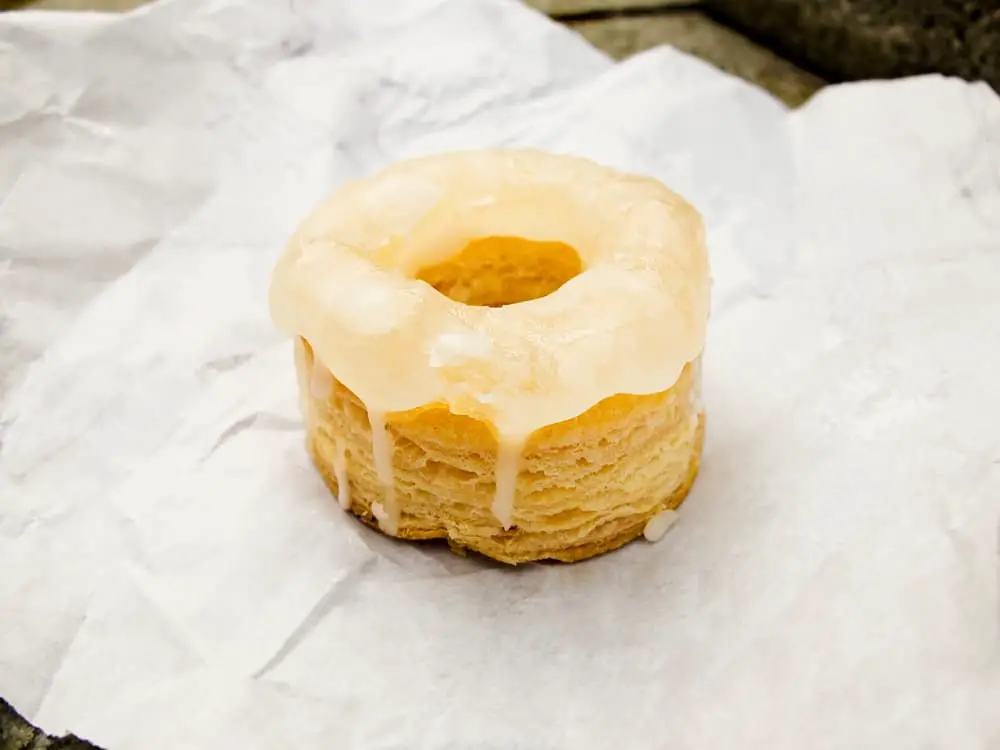
Potato Donut
Many people don’t even know that potato donuts are a thing, even though they’ve been around in the United States since the 18th century. They were created with simple recipes that called for sugar, fat, and mashed potatoes. Since then, they’ve remained a staple in many parts of the country. In fact, Spudnuts was a donut chain that sold potato donuts, and it actually predates both Dunkin’ Donuts and Krispy Kreme.
While potato donuts undoubtedly had their day, they no longer should be craved. Even the best donut made out of potatoes can’t hold a candle to the other donuts that are higher on this list. A potato donut still makes for a tasty snack, but unless no better alternatives are available, it’s best to join the modern world and move on to something more flavorful.
If you really want to try potato donuts, the bad news is that the Spudnuts chain has gone out of business. The good news is that you can still find individually owned Spudnuts shops across the country.
Maple Bacon Donuts
While it’d be too harsh to classify maple bacon donuts as a gimmick, these things are definitely a fad. It seems like an unwritten rule that every independent donut joint you visit has to offer maple bacon donuts.
While the origin of this donut is argued about, it’s believed to have been created in an Omaha, Nebraska, bakery where it was given the name “The Elvis.” That’s an appropriate name because Elvis Presley was known to put bacon on everything, even peanut butter and banana sandwiches.
Eating a maple bacon donut can be a fun way to start your day. If the forecast is bleak, this donut is sure to make life a little bit more tolerable. The reason why it’s not higher on our list is because the maple bacon donut isn’t something you’ll want to eat more than two or three times. Sure, it’s pretty good, but the allure quickly fades.
Pershing Donuts
Pershing donuts are basically cinnamon rolls in donut form. The major difference is that it’s made with donut batter. Additionally, although some cinnamon rolls have raisins, Pershing donuts almost never do.
While Pershing donuts get bonus points for being more portable than cinnamon rolls, that’s about the extent of their positive attributes. The truth of the matter is you should just opt for a soft, gooey cinnamon roll instead.
Pershing donuts are typically firmer than cinnamon rolls — and that takes away from what makes cinnamon rolls so yummy. If you love raisins, then your decision is even more of a no-brainer.
Go get a giant cinnamon roll from Lulu’s Bakery & Cafe or a delicious cinnamon roll from Cinnabon. You can also find cinnamon rolls at drive-thru burger joints like Whataburger. It’s not even that difficult to make your own cinnamon rolls. All four of those options are superior to settling for a Pershing donut.
Sugar Donuts
Sugar donuts are donuts that come with a coating of either powdered sugar or granulated sugar. With sugar being the first thing that enters your lips, this type of donut is sure to capture the attention of your sweet tooth. Things can’t get much sweeter than pure sugar.
However, there are a couple of issues with sugar donuts. First of all, they can be messy. No matter if it’s coated with powdered sugar or granulated sugar, a notable amount of the sugar will either fall onto your clothing or get stuck on your fingers. Sucking on your fingers between each donut becomes a chore after a while. It also makes these things difficult to eat if you’re on the move.
Secondly, these donuts can become overbearingly sweet quite quickly. Even if you have a needy sweet tooth, there’s a limit of how many of these donuts you’ll want to eat in one sitting.
The most popular brand of sugar donuts are Hostess Donettes, from the same company that makes Twinkies.
Cream-Filled Donuts
Selecting a cream-filled donut can be a risky decision. Types of cream you can find in donuts can range from rich, thick chocolate custard to light, airy vanilla whipped cream — or anything in between. If you end up not liking the cream that fills the donut, the entire donut will be ruined for you.
Another issue is cream-filled donuts tend to get soggy a lot faster than other kinds of donuts. Even if the cream itself ends up being tasty, a soggy donut is virtually inedible. No one wants to chew on a waterlogged donut that has the texture of a wet sponge.
If you want to increase the chances of your cream-filled donuts being scrumptious, the first thing you should do is eat it right away to avoid it getting soggy. The second tip is to locate a Boston cream donut. You’ll know exactly what you’re getting if you order one of these donuts, as it’s basically the donut version of a Boston cream pie. Typically, a Boston cream donut features chocolate frosting on top and white or yellow custard in the middle.
Cake Donuts
If you want your donut to be soft and fluffy, stay away from cake donuts. Compared to other types of donuts, cake donuts are much more dense. While this may be a good trait if you’re really hungry and you’re looking to fill your tummy as quickly as possible, you will miss the traditional fluffiness that can make the best donuts so memorable.
It’s not difficult to find cake donuts, as you can even find them at Krispy Kreme. That said, some people find that the cake donuts at Krispy Kreme should be avoided because they’re too dry, too firm, and too boring.
If you do purchase cake donuts, learn about what you can do to keep these donuts fresh. By storing them at room temperature and in containers that are air-tight, you can stop cake donuts from quickly going stale. If you want these donuts to last multiple days, keep them cold in the fridge or even the freezer.
Frosted Donuts
While frosted donuts aren’t the best of the best, they’re certainly an above-average choice when you’re at your local donut shop. A frosted donut is a donut that has frosting on top. Sometimes the entire donut is covered with frosting, but usually the frosting resides on only the top half of the donut.
The positive aspects of frosted donuts are flavor and variety. Everyone loves the taste of frosting, and the number of possible frosting flavors is only limited by your imagination. Although chocolate frosting is the most popular, it’s really easy to find donuts topped with vanilla frosting and strawberry frosting.
Additionally, frosting can be used to hold sprinkles — and who doesn’t believe that sprinkles make everything taste better?
Conversely, frosted donuts can be messy, and they aren’t exactly easy to eat if you’re on the go. One wrong move and you’ll be dealing with frosting covered fingers. But the worst trait of frosted donuts is the fact that these things are usually half plain. Even if you love the frosted half, the bottom half won’t be nearly as exciting.
Crullers
If you ever see donuts that appear to use twisted or braided dough, you’re most likely looking at crullers. The twists and braids in these donuts are not only cool to look at, but a top-notch cruller (that name comes to us from the Dutch word for “twisted cake”) can taste really good. If the dough is fried just right, these donuts have a pleasing crunch on the outside and softer inside that can seemingly melt in your mouth.
Unfortunately, you can’t always count on crullers being made correctly. It’s easy to ruin a cruller. If it’s fried for too long, the entire thing will be too hard and eating it will quickly turn into a crummy situation. If it’s not fried for long enough, the cruller will be too soft and the braids will come apart too easily.
Order a cruller if you have confidence that the person making the cruller knows exactly what he or she is doing. Otherwise, pick one of the other types of donuts higher on this list.
Jelly Donuts
It’s impossible to be sad when you’re basking in the glory of a jelly donut and preparing your taste buds for a fruitastic onslaught. Whether the jelly is raspberry, strawberry, lemon, mango, or anything else, it’s very difficult to make a bad decision. When in doubt, just sample all the jelly donuts because you’re unlikely to be upset with any of the flavors.
The only downside of jelly donuts is you don’t know how much jelly you can expect to be in the middle just by looking at the donut. You have to take a blind leap of faith and hope that you don’t get short-changed by getting only a tiny dollop of jelly — or worse.
While it’s not as common, it’s also possible that your jelly donut has too much jelly in it. No matter how much you like jelly, it’s doubtful that you spend your free time eating the fruity goodness by the spoonful.
Glazed Donut
Compared to other donuts, glazed donuts can look simplistic or even yawn-inducing. However, there’s nothing simple or boring about how these legendary donuts taste. If you are in doubt, give a glazed donut a try and you too will join the many people who believe that these donuts are the absolute best.
If you want the ultimate glazed donut, head to Krispy Kreme when you see that their Hot Light is turned on. That Hot Light indicates that their glazed donuts are fresh, which means your lips will soon be graced by a warm donut that is so delicious that you may very well cry tears of happiness.
Even if you can’t make it to a Krispy Kreme, part of the reason why glazed donuts are so great (beyond the fact that these handheld delights are so portable) is that they’re difficult to mess up. Pick up a box at your local grocery store — or even the nearest corner store — and you are likely to be thrilled with your sweet purchase.
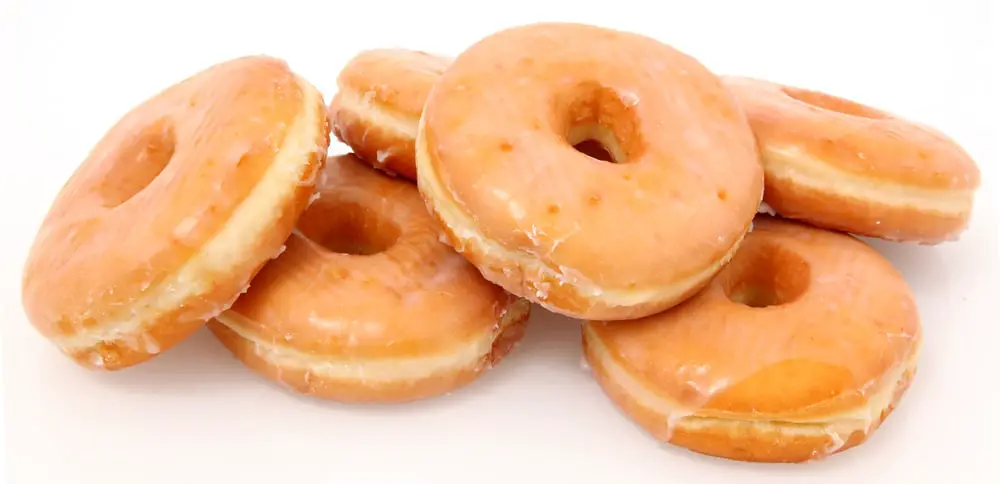
History Of Donut Holes
If you’re a child, donut holes might make sense. These small sweet treats are easy to handle and easy to nibble. But if you’re a fully grown adult, don’t be caught eating donut holes. No adult who makes a habit of eating donut holes deserves to be taken seriously.
Why do donuts have a hole in the middle? Most likely, a crafty chef long ago figured out a fried cake can’t have an annoyingly greasy and doughy middle if the middle is missing and, voila, the modern ring-shaped donut was born. But while these donuts have a real history that created their shape, donut holes on the other hand are just a gimmick.
If the thought of a donut hole makes your mouth water, a full-size donut should cause a tsunami in your mouth. There’s nothing a donut hole can do that a regular donut can’t do, so do yourself a favor and don’t be a child.
A large part of the history of donut holes can be credited to one Hanson Crockett Gregory. But what’s with the ring shape—not to mention those bite-sized pieces we call “donut holes?”
While Captain Gregory recalled cutting into the donut with a round tin pepper box, some historians say the real story is far more interesting. Some claim he skewered one of his mom’s donuts on a spoke of his ship’s wheel during a storm.
Others make the case that it made the pastry easier to digest, while others speculate that the captain was skimping on ingredients.
In any case, nowadays the process is far less interesting. Although donut holes were originally derived from their ring donut counterparts, now sellers produce and bake them separately. Thankfully, these mouthwateringly decadent donuts make our favorite pastry look anything but boring.
